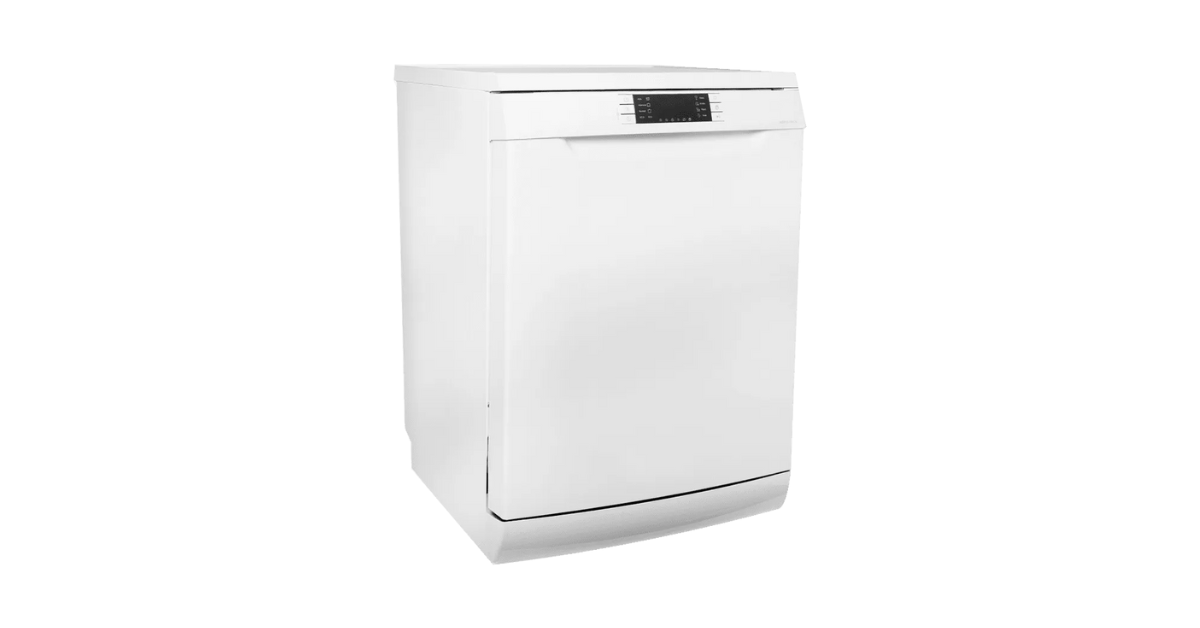The Rise of the Dishwasher in Singapore Kitchens: A Modern Necessity
In the fast-paced urban environment of Singapore, convenience is king and in this context, the Dishwasher Singapore phenomenon has quietly but decisively changed the way many households manage kitchen chores. What once seemed like a luxury or an occasional indulgence is now steadily becoming a staple for families, professionals, and even small households seeking to reclaim time, maintain hygiene, and boost efficiency. No longer merely a premium appliance, the dishwasher in Singapore is evolving into an essential component in modern culinary routines.
1. Why Dishwashers Are Gaining Traction in Singapore
a) Time is Limited, Especially in Urban Life
With the nation’s workforce often juggling demanding schedules, home chores are among the first to get squeezed. Washing dishes by hand—not just the dinnerware but pans, utensils, and glasses—can consume a nontrivial chunk of time every day. A dishwasher automates this labor, freeing up time for rest, family, or productivity.
b) Hectic Lifestyles and Smaller Households
Many Singapore homes are compact, and with the prevalence of dual-income families or single professionals, there’s a strong preference for appliances that “do more with less.” The convenience of setting the dishwasher and letting it run while you attend to other tasks makes it ideal for modern households.
c) Health, Hygiene, and Water Efficiency
Hand washing may seem thorough, but dishwashers operating at high temperatures can sanitize more effectively, killing bacteria and ensuring food-safe cleanliness. Many models also use less water per cycle compared to hand washing, especially when loaded optimally, aligning with Singapore’s emphasis on sustainability.
d) Declining Costs, Rising Features
Over the past decade, the cost of dishwashers has become more accessible, and features—such as multiple wash cycles, energy-saving modes, adjustable racks, and noise insulation—have improved. As consumers demand more intelligent appliances, manufacturers continually innovate.
2. What to Look for When Choosing a Dishwasher in Singapore
Buying a dishwasher is more nuanced than picking the most expensive model. Below are key dimensions a buyer should evaluate:
a) Size & Capacity
In Singapore, kitchens are often compact, so space is a prime consideration. Dishwashers come in standard widths (e.g. 45 cm or 60 cm) and various configurations (integrated, under-cabinet, freestanding). Capacity is often measured in “place settings” — how many settings (plates, cutlery, glasses) the machine can wash at once. Choosing a size that suits your household size while fitting your existing kitchen layout is essential.
b) Energy, Water Usage & Efficiency
Because electricity and water are significant household costs, opt for models with strong energy ratings and water-efficient cycles. Many modern dishwashers tailor water usage and heating times to the load, reducing waste. Also, models with eco-modes, delayed start, and half-load settings help minimize consumption.
c) Noise Levels
Singapore homes are often open-plan or have kitchens adjacent to living areas. A noisy dishwasher can be intrusive. Aim for models rated under, say, 45 dB for quiet operation. Manufacturers now incorporate sound-damping design—insulated doors, improved pump designs, and vibration reduction.
d) Flexibility & Features
Look out for:
-
Adjustable racks and foldable tines to accommodate pots, pans, and tall glasses.
-
Specialized wash cycles (intensive, eco, quick, glass, sanitizing).
-
Sensor-based programs that gauge soil levels and auto-adjust time or water.
-
Safety features: child-locks, anti-leak systems, overflow monitoring.
-
Drying systems using hot air or fan-assisted drying.
-
Smart features: Wi-Fi connectivity, app control, remote monitoring—some newer models allow you to start or monitor a wash via your smartphone.
e) After-sales Support & Warranty
In Singapore’s humid climate and with daily use, reliability matters. Check for warranty duration (especially for parts like motor, pump, heaters), availability of service centers, spare parts, and maintenance costs. A solid warranty and prompt after-sales support often justify slight price premiums.
3. Benefits of Installing a Dishwasher in Singapore Homes
Efficiency & Time Savings
One of the most immediate benefits is time—what might take 20–30 minutes of scrubbing can be replaced by a few taps and letting the machine handle the dirty work.
Better Hygiene
Dishwashers can reach high temperatures (50–70 °C) during wash cycles, sanitizing surfaces more reliably than lukewarm hand-washing. For households with children or elderly family members, this is a notable advantage.
Reduced Water & Energy Waste
Surprisingly, a full dishwasher cycle can use less water than washing numerous individual dishes. This is especially true with energy-efficient models and eco-mode settings. Over time, these savings offset the appliance’s power consumption.
Less Clutter, More Cleanliness
Loading dishes directly into a machine rather than stacking them in sinks helps maintain a cleaner, more aesthetic kitchen. It also reduces the risk of leftover food residue attracting pests or odors.
Increased Property Appeal
For those who might rent or sell their properties in Singapore, having a dishwasher can be a value-add. It signals a modern, well-equipped kitchen and can distinguish one home from another in a competitive housing market.
4. Challenges & Misconceptions
Perception of High Cost
Many Singaporeans still view dishwashers as luxury gadgets. While premium models do cost more, there are mid-range options that deliver considerable value. Buyers need to weigh upfront costs against long-term convenience and utility savings.
Space Constraints
Some kitchens, especially in older flats or compact apartments, may not have the needed space or plumbing configuration. In such cases, buyers must explore slim models or portable countertop units—but those often come with trade-offs in capacity or performance.
Energy Consumption Myths
Some consumers think dishwashers always use lots of electricity. But modern models use smart sensors and graduated settings to optimize resource use. Choosing an energy-efficient model helps mitigate this concern.
Maintenance & Proper Loading
Dishwashers work best when loaded correctly, and periodic cleaning (filter cleaning, descaling, checking seals) is needed. Users unfamiliar with machine care may find performance degrades over time. However, many units include reminders or self-clean cycles.
5. How to Incorporate Dishwashers into Singapore Kitchen Layouts
Built-in / Integrated Installation
In new homes or renovated kitchens, dishwashers can be integrated under countertops, next to sinks, or within cabinetry for a seamless look. Matching panel doors can make them blend with cabinetry.
Freestanding or Portable Units
In homes without full cabinetry, a freestanding unit can sit in a corner or next to a counter. Some compact or countertop models are ideal for couples or small kitchens.
Shared Plumbing & Drainage
Because Singapore homes often reuse plumbing layouts, it’s ideal to place the dishwasher near an existing sink or waste outlet to simplify installation and reduce modification costs.
Ventilation & Access
Ensure the chosen space allows for door swing, ventilation, and service access. Leave enough clearance and avoid corners that obstruct loading/unloading.
6. Spotlight on a Representative Model (Reflecting Market Trends)
Consider a modern 60 cm full-size model tailored for Singapore’s households. Equipped with multiple wash programs, quiet operation, adjustable racks, and anti-leak protection, such a model embodies the direction the dishwasher market is heading. Features like efficient water usage (e.g., using just 10–12 L per cycle), auto-sensing, and dedicated glass-care washes are becoming more widespread. These reflect how consumer demand is pushing manufacturers to balance performance, conservation, and noise control.
7. Installation, Use & Maintenance Tips
Proper Installation
-
Ensure you use a qualified plumber or technician to connect to water supply, drainage, and power supply safely.
-
Use correct voltage, grounding, and sealing to prevent leaks.
-
Position the machine with minimal bend in the drain hose and avoid sharp inclines.
Best Use Practices
-
Scrape off large food scraps (bones, shells), but avoid heavy pre-rinsing—machines operate more efficiently when they detect soil levels.
-
Load items with spray arms in mind—avoid blocking movement.
-
Use high-quality detergent, rinse aid, or machine-specific pods for optimal results.
-
Start eco or sensor cycles when load is light.
-
Run full loads (not half-empty) when possible to maximize efficiency.
Regular Maintenance
-
Clean filters (weekly or monthly) to prevent clogs.
-
Use a descaling agent every few months to prevent limescale buildup, especially in hard water areas.
-
Check door seals and spray arms to remove debris.
-
Run a maintenance cycle (empty with detergent) periodically.
-
Inspect hoses for wear or leaks, and replace as needed.
8. The Future of Dishwashers in Singapore
As smart homes become more prevalent, dishwashers will increasingly incorporate Internet of Things (IoT) capabilities—remote operation, diagnostics, usage analytics, predictive maintenance. Integration with home assistants or kitchen systems will allow you to monitor and control cycles from your phone, receive alerts for detergent levels or faults, and even automate runs during off-peak electricity rates.
Materials engineering, more efficient motors, and eco-friendly refrigerants or heating methods will further push the envelope in energy and water savings. Expect more compact, modular, and flexible designs that cater even to ultra-compact apartments without sacrificing performance.
9. Final Thoughts
The dishwasher Singapore isn’t just a flashy appliance—it’s becoming a practical, value-adding investment in quality of life. For those navigating busy work commitments, tight living spaces, and increasing environmental awareness, it offers a path to greater convenience, cleanliness, and resource efficiency. While challenges remain—space, cost perceptions, setup—these are gradually being addressed through innovation, smarter design, and expanding consumer choice.
When considering a dishwasher for your Singapore home, balance your immediate needs (household size, available space, noise tolerance) with long-term considerations (energy use, service support, integration). With the right choice, a dishwasher can become a long-term ally in maintaining a tidy, efficient, and modern kitchen.







